Backpacking, an Ambassador-christened Road Trip, and chasing a promise for Irish peatlands.
Dublin 04, UCD Village.
This St. Patrick’s eve all is quiet, except for the typing flurry of we UCD’ers sequestered from the craic to finish midterm assignments. I sit with them, typing this stream of consciousness. If it gets past editing buckle your crios sábhála. Unless you also prefer two wheels, in that case fasten the ripcord of your inflatable airbag to the vehicle. Don’t break down on the N6 like I did shortly after Aadi took this photo:
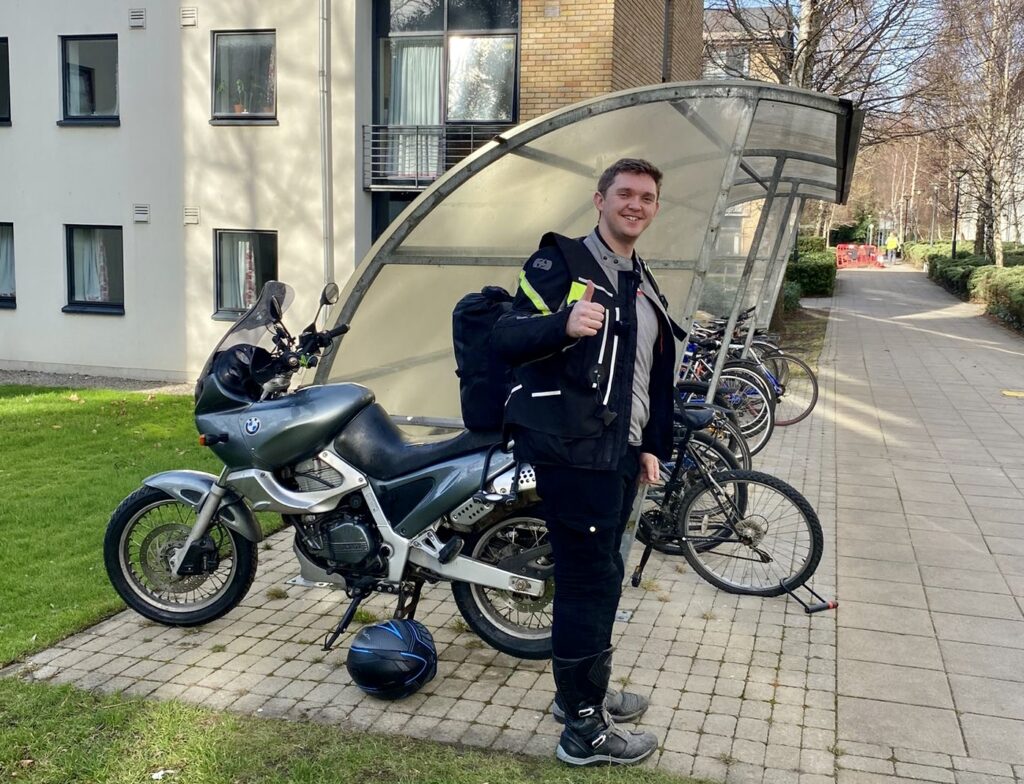
In Medias Res: Table Mountain Summit, Wicklow.
After 12 hours of walking between the first two days, I managed the first 24 miles towards Lugnaquilla from Sorrell Hill. That felt like an accomplishment given lack of a trail & abundance of blanket bog. The route was miserable from my feet sinking into wet ground, but beautiful from hitting the highest points in Wicklow. Holy solid ground was found at Table Mtn. where clouds parted, sending rays of fading light over the IDF’s temporarily dormant Glen of Imaal artillery range. I didn’t want to wild-camp near the summit, but it was dry. There a blistering wind whipped my tent and brought enough ice pellets to cause suspicion. It had not rained that week yet…
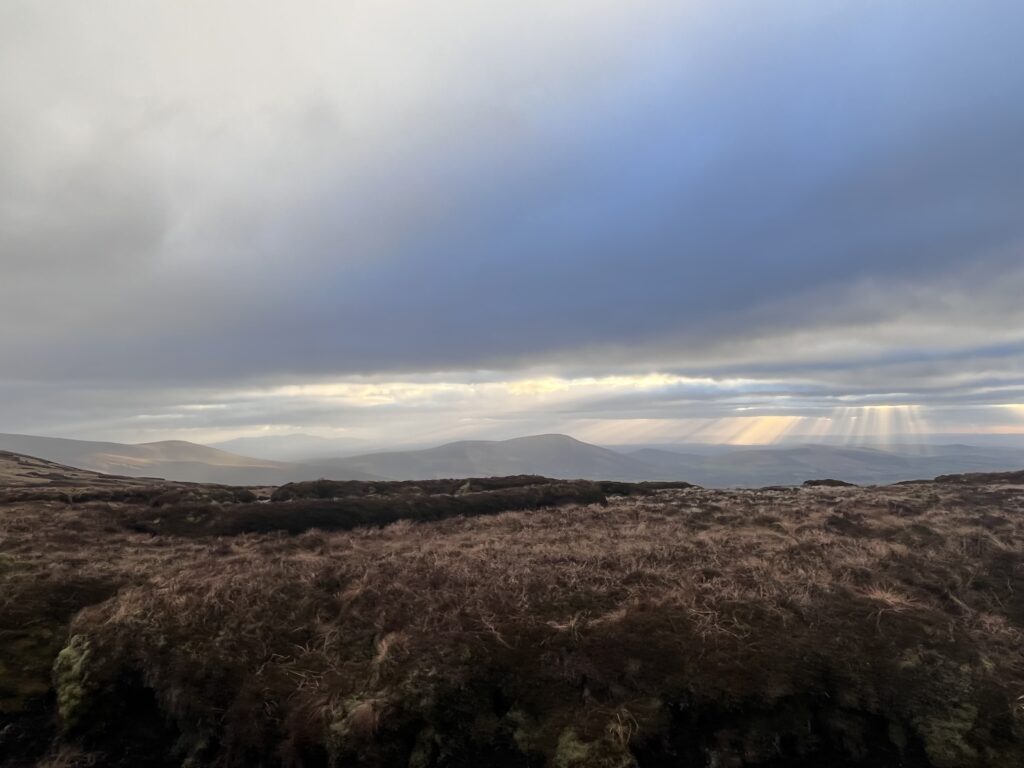
Howling over the ridge the wind quoted Yeats into my gut: “Bolt and Bar the shudder, for the fowl winds blow: Our minds are at their best this night, And I seem to know, that everything outside us, is Mad as the mist and snow”.
I quickly pulled stones from the ground and stacked piles onto the tent stakes. Sphagnum moss in blanket bogs can hold 20-times it’s own weight in water. Irish wind had dried it out. Grabbing some for insulation I quickly lined the bottom permitter of my tent inside & out and plugged all the vents to prepare for the worst. After a feast of ramen and prayer to get through, I buried into my sleeping bag under a mylar blanket. The blanket was blowing inside the tent as the walls shook.
Even Glenomena sounded nice but my dreams went back to this scene of the last Dublin Mitchell visit to Galway at the office of Watkins & Barton:
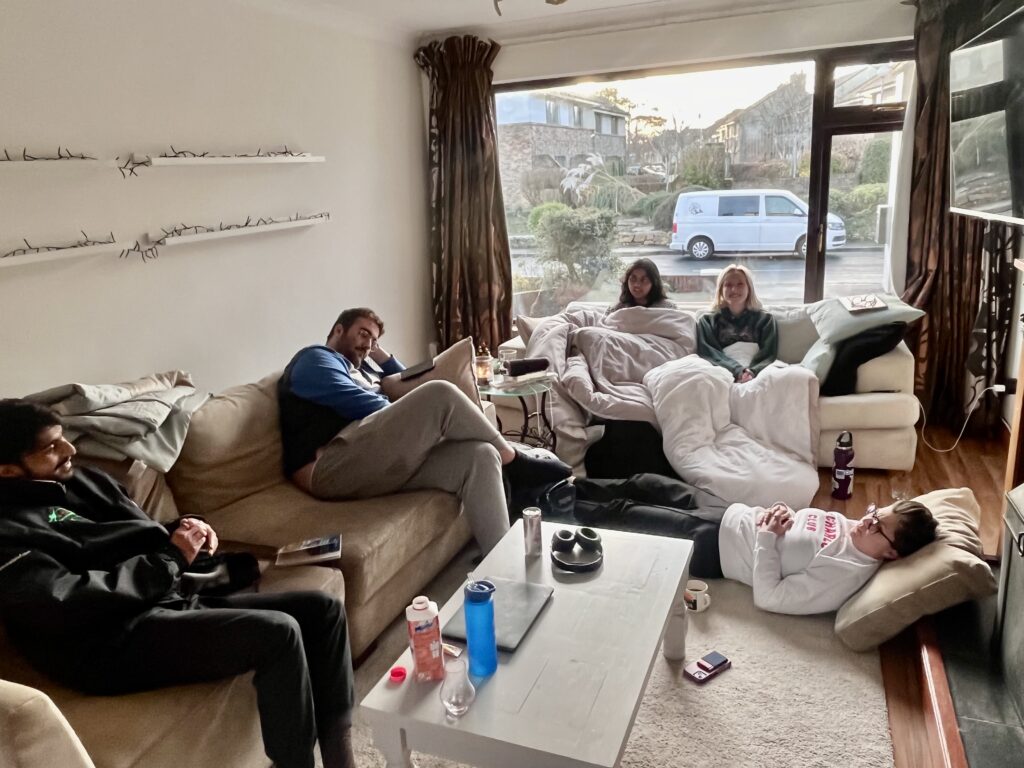
It was 3:45 AM on the mountain. I was dreaming of warm places from Galway to playing trad sessions next to the fireplace of the Monkstown Comhaltas… then suddenly I heard crunching footsteps. Next was the voice of a concerned Irish woman: “Guys…. Tent.”. Someone spoke over the wind, “Do you think someone is in there ?!?” Of course there was. What I didn’t understand is what group of people would be outside my tent at that hour, on a trail they would have started no later than 1:00am. But they wondered similar of me. Later, morning broke to reveal their concern. My moss insulation froze to the tent with a sheet of ice. To put on my shoes I had to take a butane stove and torch my laces to thaw them. After quickly packing up I admired that the place beneath my tent was the only soft spot of ground.

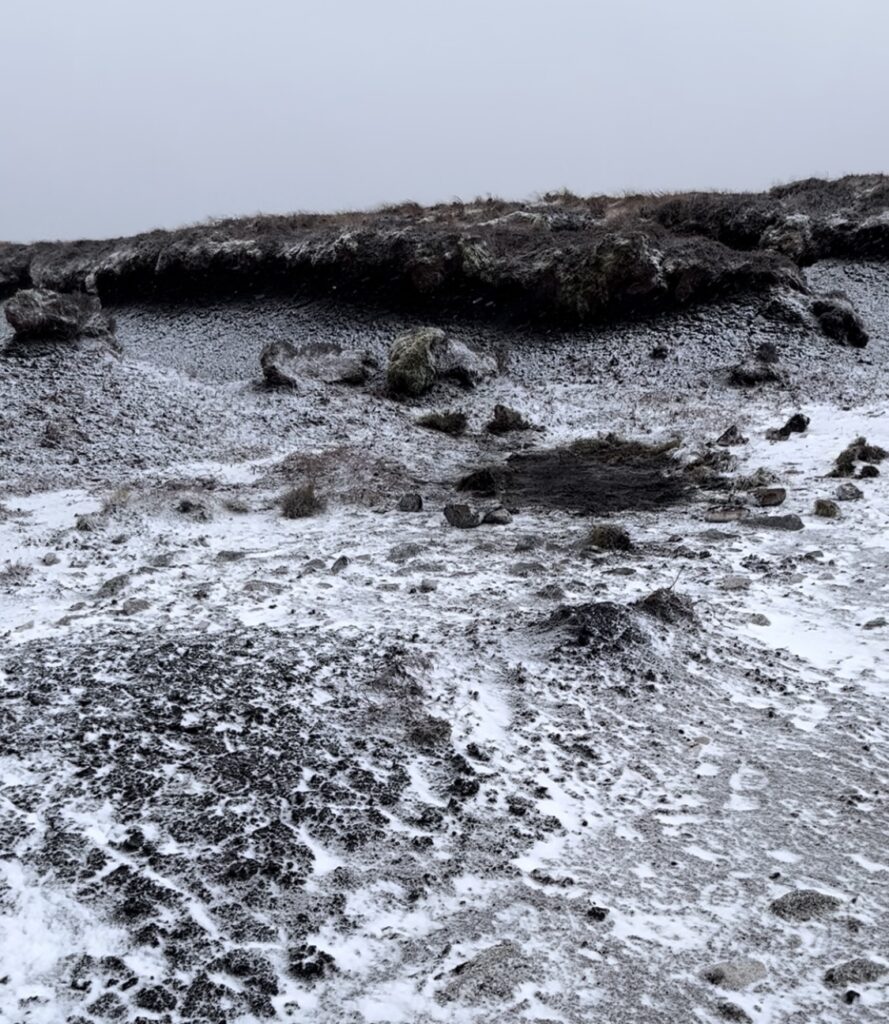
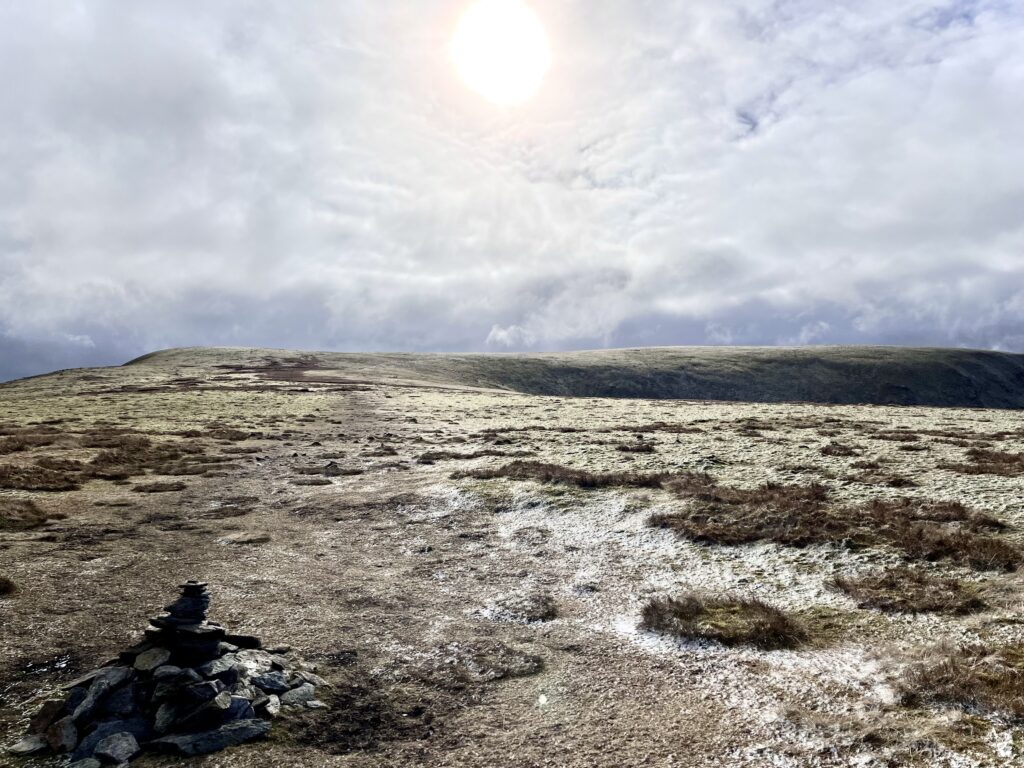
I made great time not slowing down in the bogs since they were frozen. I reached Lugnaquilla an hour early and came down fast. Cutting through a Coillte pine stand to find no phone service, I hitchhiked a public road to Glenmalure Lodge. With a moss-covered sweater, pine needled hair, and turf thawed on my shoes, I ordered a Guinness that never came and a taxi that eventually did. I was asleep in Dublin before dark. Getting through that surely I can get my thesis done early.
What I did not complete the next week was driving a mid-sized SUV through Conor pass in Dingle when family visited. There are a few benefits to motorbikes – as soon as another car came barreling down with a wheel over the white line I moved left. Suddenly the rear left tire was punctured by a rock wall for sheep pasture. Thankfully this too was endurable. As the AA man changed the tire with an inflatable jack we reminisced on the trip which had more ahead and was already great. Somehow we stumbled upon the US Ambassador and Taoiseach at Waterford’s celebration of the first flying of the Irish flag.

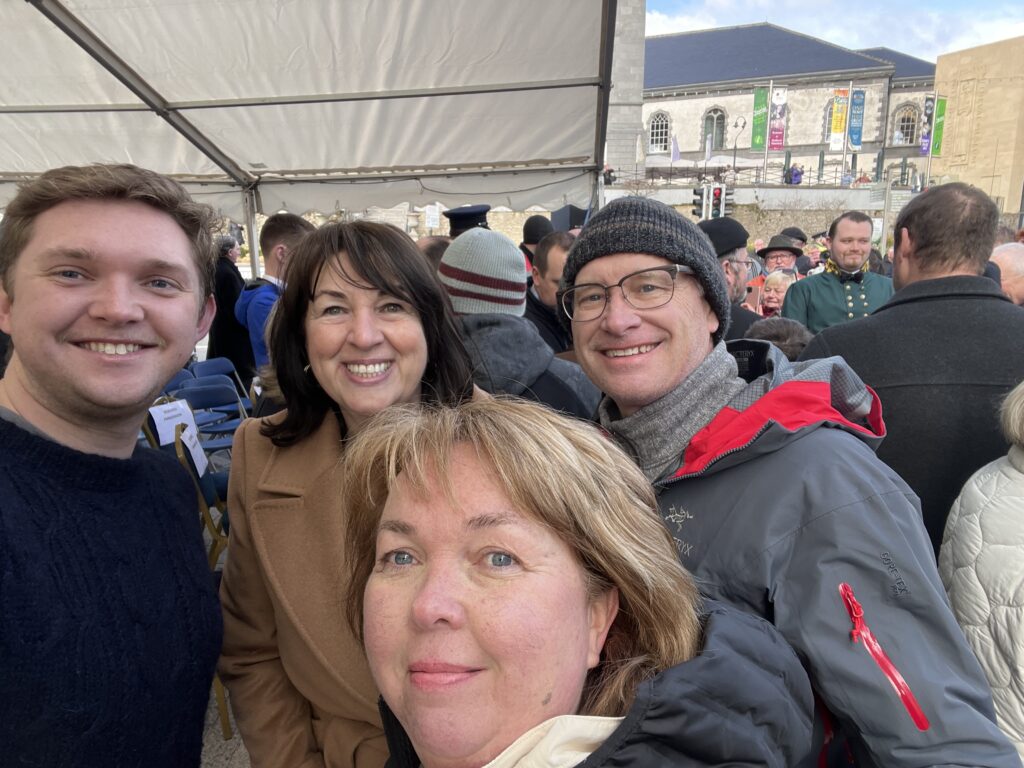
The tricolor was created by French women then flown by Irish revolutionary Thomas Meagher, who later led the Irish Brigade for the Union and became governor of Montana. The celebration was joined by US ambassador Claire Cronin, ambassadors of Great Britain, France, Canada, Australia, Belgium, Ukraine, the US military, and Irish peacekeeping veterans. After meeting Leo Varadkar in a somewhat shocked state, I had an exciting family conversation with Ambassador Cronin. With US-Ireland partnerships across the 175 years since the tricolor and 25 years since the Good Friday Agreement, I shared how it has been an incredible opportunity to step into a part of that legacy that is the Mitchell program and consider the future of that collaboration. If the program can find the support it needs to keep going, it can keep providing an opportunities for scholars to solve common problems and find new opportunities for all-Ireland and the US. I hope that conversation might continue with Claire.
This led me to consider if the research I’m starting on how to capture new opportunity for Irish peatlands may have dual benefit in the US. My thesis to-be is being mentored by the director of Peatland Finance Ireland, Shane McGuinness. I’ve joined his team under Horizon Europe’s WaterLANDS project headquartered in UCD’s school of Planning, and formed a collaborative with Niall O’Brolchain and others at the Univ. Galway. We want to design and introduce a program to policymakers that might offer a new chapter for the use of rewetted peatlands in Ireland’s rural economy. It was believed that the 2018 turf-cutting bans (now partially failing), and calls to ban horticulture peat in Ireland, left no economic alternative for peat harvest. Let alone one in sync with peatland rewetting. The Bord na Mona seasonal income that families would use to send students to college, or help pay the bills, suddenly disappeared…before this cost of living crisis. But, there is an alternative relatively nobody knows about – yet. German projects partnered with EU programs have created commercial moss farms on rewetted peatlands. Market demands paying up to 30k EUR per hectare exceed the supply. Thanks to the work of peatland partners in Brussels, under EU law Ireland could design a program under it’s CAP strategic plan supporting moss farming. That design is what my thesis outline is aimed at recommending, which I need to submit now. I have a hunch that the work might give insight to how President Biden’s 30 for 30 plan could revive peatland carbon sinks and rural economies in the northern US. Now I’m off for more typing, and responding to an email from a few weeks ago that starts with “Hello from Germany”….
